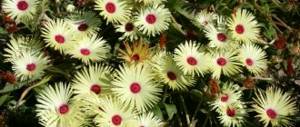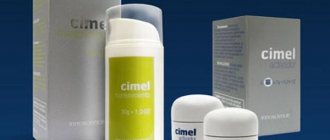How it works?
Trichloroacetic acid
Trichloroacetic acid is one of the components of TMC 3 Action peeling.
It helps
- effectively cleanse pores of excess sebum and other impurities
- fight microflora that stimulates the development of inflammation on the skin
- maintaining skin elasticity (achieved by influencing fibroblasts, which leads to an increase in the production of natural collagen)
In combination with two other components, trichloroacetic acid has an anti-inflammatory and antiseptic effect on the skin, while not only disinfecting it, but also minimizing possible irritation.
Mandelic acid
- smoothes wrinkles
- moisturizes
- removes age spots
- destroys pathogenic microorganisms, having a bleaching and antiseptic effect
Kojic acid
Kojic acid in the TMC 3 Action peeling is responsible for the external condition of the skin. With its help, the skin acquires a uniform shade, becomes smoother and acquires a healthy color.
Helps fight
- acne marks
- shallow scars
- various types of redness
- freckles and pigmentation
Dimethylethanolamine (DMAE)
This peeling component helps
- increasing skin tone by strengthening muscle fibers
- protects skin cells from free radicals
- increases the protective properties of the cell
Ascorbic acid, resveratrol and alpha lipoic acid, organic silicon
These components of TMC3 action peeling
- have a powerful antioxidant effect
- participate in the processes of slowing down aging
- maintaining youthful skin
This combination (pH 1.5) causes tissue stimulation induced by the acids contained in the compound and, thanks to a substance with a scavenger and antioxidant effect, stimulates epidermal regeneration.
How does the procedure work?
Apply the product to cleansed skin of the face, neck and décolleté. Using massage movements, distribute the composition in a thin layer.
Next, the Neutro-Active neutralizer is used, which eliminates the remnants of aggressive components and restores natural acidity.
A cosmetologist can recommend Post Peel cream - it removes redness, moisturizes, and also protects the epidermis from ultraviolet radiation.
The minimum procedure time is 20-30 minutes. The course consists of 4 sessions, they must be repeated at intervals of 7-15 days, the timing depends on the phototype and type of skin.
TCA peel (trichloroacetic acid peel)
You are reading the section about acne and post-acne. Previous topic: superficial peels. Jasner peel and phenol peel.
The term " TCA peel"
" comes from the English abbreviation Trichloroacetic acid (
trichloroacetic acid
).
TCA on skin causes coagulation
(
folding
) of skin proteins, this leads to a softening of the stratum corneum of the epidermis and
an exfoliating
effect. Trichloroacetic acid does not have a systemic (general) effect on the body, unlike salicylic acid.
TCA peels are divided by depth
:
- superficial-medium
peelings (trichloroacetic acid is used with a concentration of 10-15%), - medium and deep
peelings (concentration 20-30%);
and by area
impacts:
- all over the face
- local (local) peelings (on individual areas of the skin).
Superficial-medium TCA peel
This is one of the best peels for treating dyschromia.
(disturbances in skin color) and atrophic scars.
However, TCA peeling is not recommended
due to the high risk of post-inflammatory hyperpigmentation.
Frost (“white frost”) immediately after TCA peeling
Medium and deep TCA peels
Conducted with trichloroacetic acid with a concentration of 20-30% to treat severe atrophic changes
skin.
To carry out such peelings, complete relief (cessation, interruption) of the inflammatory process is required. Peeling is painful
and therefore is carried out under local and even general anesthesia (anesthesia).
This is what the patient looked like 10 days after a self-administered home TCA peel with 100% acid. Don't try this again!
Recovery period
skin lasts from 2 weeks to 6 months, which does not allow for frequent medium and deep TCA peels.
Local TCA CROSS peeling
CROSS peeling
refers to local (local).
It got its name from the English words Chemical reconstruction of skin scars ( chemical reconstruction of skin scars
).
Local TCA CROSS peeling with 95% acid.
It is carried out with trichloroacetic acid with a concentration of 65% to 99%. Acid is applied to the bottom of each ridge
for 10 seconds (until the frost effect appears). All scars are treated in turn. CROSS peeling is carried out every 1-2 months. Results are noticeable after 3-9 months of treatment.
Next topic: laser peeling (laser skin resurfacing).
More on the topic:
- What is peeling? Types of peelings. Contraindications for peeling
- Methodology of chemical peeling procedure (how peeling is done)
- Complications, adverse reactions of chemical peeling and their treatment
Was the material useful? Share the link:
STEP-BY-STEP PROCEDURE
Preparation for the procedure
Preparation for TCA peeling implies the following rules:
- In 4 weeks you need to give up mechanical influence such as brushing, epilation, etc. Be sure to start using a cream with a UV factor of 50 SPF
- Start using weakly concentrated creams with fruit acids at least 2 weeks in advance
- Carry out 1-2 superficial peels before the middle peel
- If you had herpes less than six months ago, you should start taking antiviral medications 3-4 days before the procedure.
- When there are 1-2 days left before the session , avoid steaming, tanning, thinning eyebrows, removing excess hair in the treatment area, so as not to injure the tissue
- You may need to get tested
We recommend: Summer PEELING PRX T33: feather-light mid-cleaning
TCA peel procedure protocol
- Makeup remover First, let's clean the treatment area with the gel (milk with lipids is not used, otherwise the effectiveness of the composition will decrease).
- Mix the solution immediately before exfoliation, because acids are slightly volatile and can evaporate. Apply with a brush to the face.
- The cosmetologist asks the patient to fan herself while the TCA peel is in effect. Or the fan turns on. The doctor carefully monitors to what level of cells the chemical peeling has reached. The first layer may be practically unnoticeable, but all subsequent ones are already a little painful.
- Frost effect appears: white frost coating. This means that the solution has penetrated to a certain depth and affects the layer of cells that we want to exfoliate. For example, you need to wait for the frost effect when removing acne scars. On the 3rd-4th day after treatment, fine-plate peeling will appear in this area, similar to light dandruff, which is eliminated with a moisturizer.
- Then the cosmetologist goes over the problem areas a second time , which he wants to influence more intensively. You can increase or decrease the effect on different facial areas to achieve the desired effect. If we treat the T-zone, the impact on the sides of the face will be minimal. At the same time, in areas that are worked more strongly, the patient feels a slight tingling sensation.
- Then a post-peeling soothing mask is applied to the face , which is prohibited from getting wet or washed off until the next morning, since the composition continues to act. It immediately removes all the unpleasant sensations: according to reviews, it’s like lying under the sun on the beach. There will be no chemical burning sensation anymore. The mask moisturizes, relieves inflammation, and has an antiseptic effect.
- The effect continues for another 12-15 hours , which is why you should not wash your face. But then be sure to wash it off, otherwise the acid will seep in too deeply.
According to some patients, after exfoliation the face seems to begin to breathe, there are no particular unpleasant sensations. The face changes color as blood rushes to it:
- Pink complexion - superficial TCA peeling;
- Light white - medium TCA peeling;
- Pronounced white - deep TCA peeling.
We recommend: JESSNER PEEL: 13 interesting facts & FAQ
Rehabilitation after the procedure
Care after TCA peeling lasts about 4 weeks (see Fig. - recovery by day).
During the healing process, bathhouses, saunas, gyms, and solariums are prohibited.
It is recommended to take vitamins, zinc, and immunomodulators.
First stage
Immediately after the TCA peeling procedure, swelling, frost and redness, and tightness of the skin are observed, but you can still appear in public. (Swelling will go away within 1-3 days.)
The next day after peeling, a film forms (from the 4th day it will turn into a crust). The areas with active facial expressions will peel off the fastest, and then the rest.
During the regeneration process, you can constantly moisturize your face, up to 15 times a day, using a spray or foam - for example, Panthenol.
On the 2nd-3rd day, you can start washing your face with mild products, chamomile decoction or boiled water (it is forbidden to mattify or dry out the skin!)
Second stage
Lasts 2-3 weeks: a new framework of collagen and elastin is formed.
During the formation of fibers, additional restorative techniques are indicated at the discretion of the doctor (for example, biorevitalization or mesotherapy).
How often can you do a TCA peel?
It will not be possible to do a repeat session earlier than 4 weeks later: it will worsen the condition of unhealed skin. A maximum of 2 treatments are possible within one season.
Stages of carrying out in the salon
Before your first TCA exfoliation session, you will need to prepare your skin with 2 superficial AHA exfoliation treatments, 2-3 weeks apart.
Also, a month before the procedure you need to give up:
- tanning and visiting a solarium;
- any facial cleansing, including mechanical at home.
It is recommended to take antiviral and antihistamine medications a week in advance (if you are prone to allergic reactions) and use a cream with a high spf (40 or more).
In the salon, a TCA peeling session is carried out in the following sequence:
- cleanse the face with gel-like products;
- degrease;
- Apply a solution of trichloroacetic acid with a cotton swab, fan brush, or simply with gloved fingers.
They start with the forehead, then treat the cheeks, nose and chin;
- wait for frost to appear (1-1.5 minutes) - this is coagulated protein, looks like a white coating;
- when using a 15% solution, the acid is removed with a cloth soaked in cold water. No neutralizer is needed;
- for more concentrated solutions, use a special neutralizing gel, which is applied on top of the frost;
- in 1-2 minutes. after the neutralizer, the face is cleansed with thermal water;
- if necessary (for medium peeling), the process is repeated;
- then the skin is treated with hydrocortisone cream to reduce the likelihood of developing inflammatory processes (post-peeling).
Recently, to prevent dehydration of the epidermis immediately after a session, biorevitalization (injections of hyaluronic acid) or mesotherapy (vitamin injections) is used.
The price depends on the class of the salon and the type of exfoliation. It is in the range of 5-8 thousand rubles.
The price does not include products for home post-peeling care, biorevitalization and mesotherapy.
How is TCA (trichloroacetic) peeling 15% performed:











